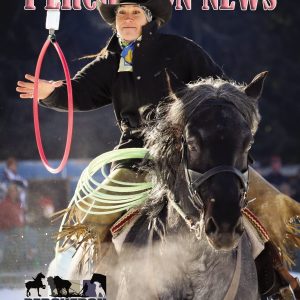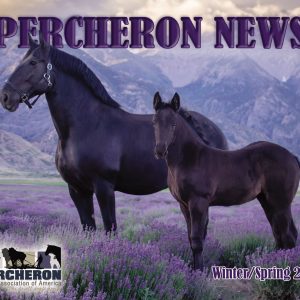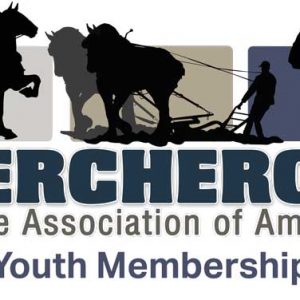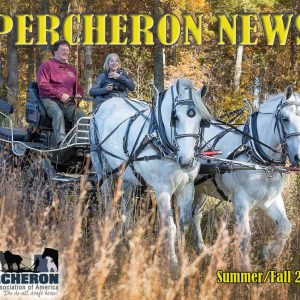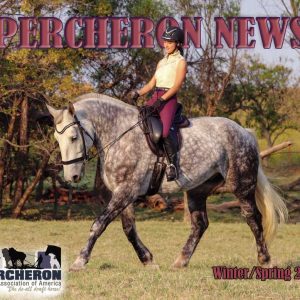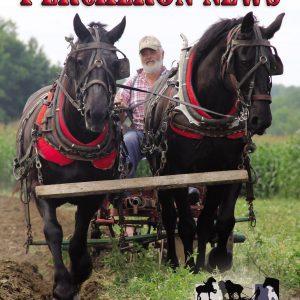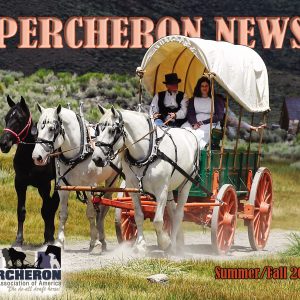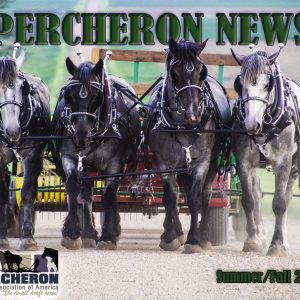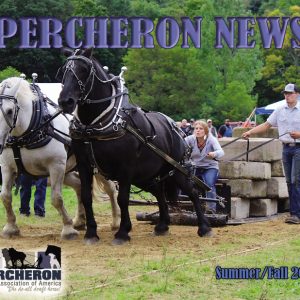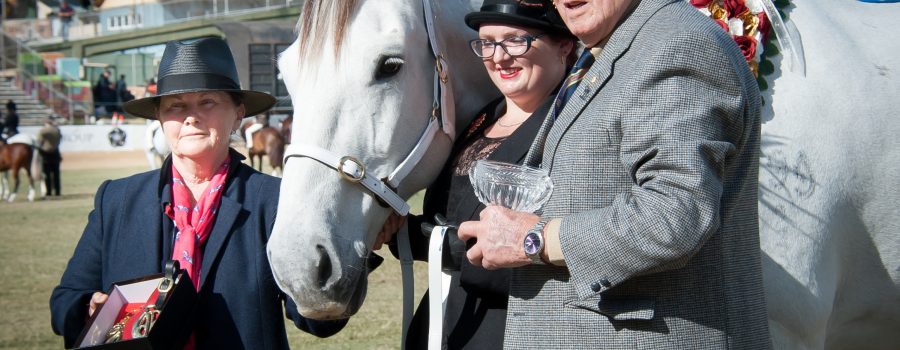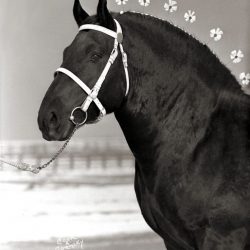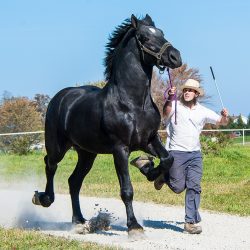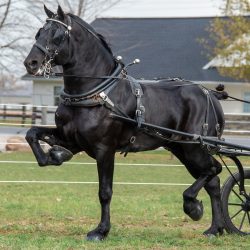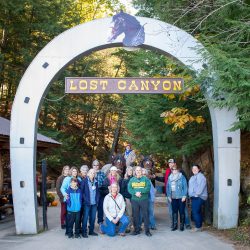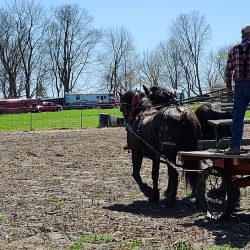 The Percheron Horse Association of America’s second year as a member of the U.S. Livestock Genetics Export, Inc. enabled us to perform two international missions for 2016. USLGE missions must be held around an event. The first mission was August 3rd-10th to attend the Royal Queensland Show operated by the Royal National Agricultural and Industrial Association of Queensland, also known as, the EKKA (short for exhibition), in Brisbane, Queensland, Australia. The second mission in N
The Percheron Horse Association of America’s second year as a member of the U.S. Livestock Genetics Export, Inc. enabled us to perform two international missions for 2016. USLGE missions must be held around an event. The first mission was August 3rd-10th to attend the Royal Queensland Show operated by the Royal National Agricultural and Industrial Association of Queensland, also known as, the EKKA (short for exhibition), in Brisbane, Queensland, Australia. The second mission in N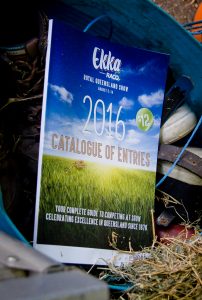 ovember was to attend the Royal Winter Agricultural Fair in Toronto, Canada.
ovember was to attend the Royal Winter Agricultural Fair in Toronto, Canada.
I was honored to be one of three delegates from the PHAoA to go on the Australia mission accompanied by my husband, lifetime member and All-American committee member, Brian Lynch, and lifetime member, marketing committee member, Brenda Grant. We headed off to the land down under during our heat of the summer which landed us in Australia’s winter. It wasn’t quite what we are used to for our winter back here in New England. It was equivalent to 70 degrees and no humidity.
The goal of this first mission to Australia was to identify and create important business relationships and to foster collaborative opportunities between American and Australian Percheron breeders and associations, as well as to discuss opportunities for Australian breeders to import American Percheron genetics into Australia. Our focus was specifically on draft horse breeders; paying special attention to purebred Percheron breeders.
There are three Percheron registry organizations within Australia, our host for the mission to Australia, the Percheron Horse Breeders Association of Australia, Inc. (PHBAA), is the original Percheron breed registry of Australia. The PHBAA added DNA provisions to their organization in 2012 to verify purebred parentage. Percherons which are not purebred in the PHBAA registry, are deemed part-bred and are graded by letter, A-F, to reflect their percentage of purebred Percheron lineage. The PHBAA consists of 30 members including their seven committee members. The PHBAA provides registration services for part-bred Percherons because currently those registrations are the financial backbone of their organization. The second organization is the Percheron Association of Australia which requires Percherons to have seven generations of purebred Percheron pedigree to qualify for registry in their organization. The third organization, Australian Percheron Society (APS), is a young organization being founded in 2013. To our knowledge currently the APS does not require DNA typing and is open to purebreds and part-bred Percheron horses.
Mrs. Andrea Detweiler, our resident USLGE aficionado and member of the marketing committee, played a huge role in organizing and planning the mission. Her attention to detail is like no other. Our schedule was broken down darn near to bathroom breaks. Andrea was the key player in communicating with the PHBAA, representative and secretary, Jamie-Lee De Jager, to put together this trip.
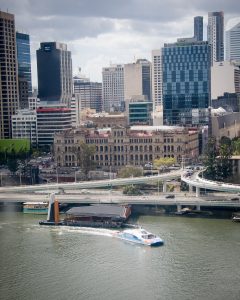 Day one of our mission was a day to settle in and adjust to the time change. We left the States in the evening, enduring a 13-hour flight from Los Angeles, landing in Brisbane, Queensland at the start of a new day just about 30 hours after our trip began!
Day one of our mission was a day to settle in and adjust to the time change. We left the States in the evening, enduring a 13-hour flight from Los Angeles, landing in Brisbane, Queensland at the start of a new day just about 30 hours after our trip began! 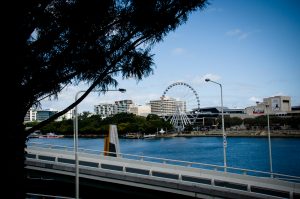 Keep in mind there is a 15-hour time difference from Eastern Standard Time. When we would call home from breakfast in the morning our children were just sitting down to have their dinner. It takes some adjusting to the time change but with the help of a little sleeping aid we got some sleep on
Keep in mind there is a 15-hour time difference from Eastern Standard Time. When we would call home from breakfast in the morning our children were just sitting down to have their dinner. It takes some adjusting to the time change but with the help of a little sleeping aid we got some sleep on
the enormous plane. Brenda and I did take a trip on the Wheel of Brisbane while Brian’s fear of heights got the better of him and he opted to stay on the ground.
Walking through the city we were completely impressed with the cleanliness and friendliness, if only we could have learned to walk on the correct side of the sidewalk! Yes, they not only drive on the opposite side of the road, they walk on the opposite side of the sidewalk too. The three Americans stood out like sore thumbs!
The second day of the trip brought a formal meeting with the PHBAA committee, including president, Charles Watson OAM, 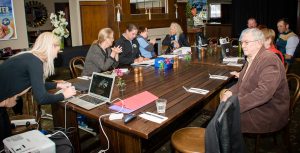 treasurer, Helen Perry, registrar, Kirsty McKenna, committee members, Clint Kenny, Linda Kraat and Margaret Watson in addition to several organization members. The
treasurer, Helen Perry, registrar, Kirsty McKenna, committee members, Clint Kenny, Linda Kraat and Margaret Watson in addition to several organization members. The
PHBAA is into their 40th year being formed in 1976 to promote improvement in breeding, showing and promotion of the Percheron Horse in Australia. Armed with a PowerPoint I led a presentation to the meeting attendees about the PHAoA, how we operate and the programs we offer to our members. There were plenty of questions to be answered and lots of notes being taken. Immediately following the meeting, we headed to the EKKA, Queensland’s largest annual event which was inaugurated in 1876, boasting an average attendance of 400,000 visitors annually, to mingle amongst the exhibitors while the PHBAA conducted their business meeting. 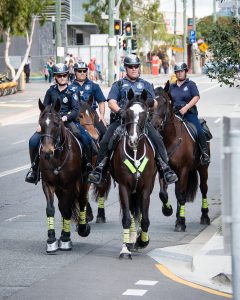
The EKKA can be compared to a larger state fair here in the U.S. It includes live entertainment, animal competitions including canine, beef, goats, cats, dairy cattle, poultry, sheep dog trials, food, family shopping, educational activities, farrier competition and a full horse show from saddle horses and ponies to heavy horses.
The meeting location was within walking distance of the EKKA just as we arrived at the entrance we
happened upon four mounted officers coming down the street towards us and could see at least two of the four horses appeared to be Percheron crosses.
We headed for the stabling area where we immediately noted the presence of a Troyer two-wheeled show cart amongst a couple of heavy horse show lorry (4 wheel wagons). It was instantly evident their equine horse trailers or in Australian terms, floats, were quite different from what one will find in the U.S.
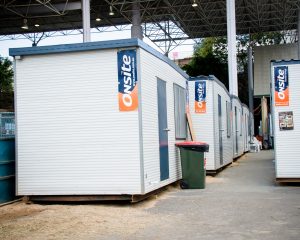 The towing vehicles are termed UTEs, or utility vehicles/pickups are vastly different from dually pickup trucks. We also noted there did not appear to be lodging or campers anywhere around the stables. Our curiosity led us to ask where the exhibitors stayed as they pointed out the block like structures which are outfitted with beds scattered around the stabling area. We mingled amongst the heavy horse exhibitors of all breeds and introduced ourselves. We were warmly welcomed and asked questions and our own questions were answered.
The towing vehicles are termed UTEs, or utility vehicles/pickups are vastly different from dually pickup trucks. We also noted there did not appear to be lodging or campers anywhere around the stables. Our curiosity led us to ask where the exhibitors stayed as they pointed out the block like structures which are outfitted with beds scattered around the stabling area. We mingled amongst the heavy horse exhibitors of all breeds and introduced ourselves. We were warmly welcomed and asked questions and our own questions were answered.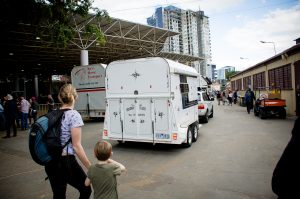
Brian, being a farrier, of course went straight for the feet of the horses. It didn’t take him long to pick up the foot of a well shod Clydesdale who turned out to be Duneske Flash Pearl, the winner of the Broodmare class, Champion Clydesdale Mare and Supreme Champion Clydesdale, owned by J M & I Stewart-Koster. Brian noted in Australia most of the shoes appeared to be handmade and resembled a keg shoe we are accustomed to in the U.S. The edges of the shoes were beveled therefore they are termed a scotch shoe. He quickly observed they didn’t use pads on any of the horses. Brian explained the use of pads and how they are used to protect the horses foot especially those used for parades or street work and on varying terrain. The horses appeared to be on average between 16-17 HH and weighed between 1500-1700 pounds. The Australian’s are big on disposition and temperament, partial to Percherons on the quieter side. It was apparent to us riding their Percherons was more desirable than driving them.
There was talk around the show exhibitors, numbers were down due to the cost of vaccinating for the Hendra Virus (HeV). HeV is a highly lethal respiratory and neurologic disease in horses and humans transmitted by “flying fox” bats. People become infected through contact with the body fluids and tissues or excretions of an infected horse. This was the first I had ever heard of HeV which has been posing several challenges to horse owners, veterinarians and the equine industry in Australia since the first outbreak in racehorses in 1994. Per the Australian Veterinary Association from 2011-2016 there have been 41 outbreaks resulting in the death of 49 horses with Queensland recording 26 outbreaks and seven confirmed cases in people, all of whom had significant contact with horse body fluids. Of those who tested positive for Hendra, four died of the disease, including two veterinarians.
We were escorted off to the 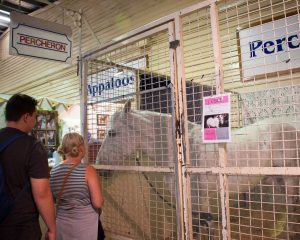
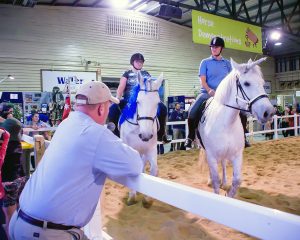 PHBAA booth in the horse breeds expo building. Jamie-Lee quickly employed Brian to narrate the Percheron breed demonstration to a crowd of spectators with two young ladies, Sian Forrest and Katie Snelson, riding their mares.
PHBAA booth in the horse breeds expo building. Jamie-Lee quickly employed Brian to narrate the Percheron breed demonstration to a crowd of spectators with two young ladies, Sian Forrest and Katie Snelson, riding their mares.
After he completed the 30-minute-long presentation Jamie-Lee then informed us it was a judged presentation! No pressure, Brian! The PHBAA placed second behind the Royals Riding School in the Best Demonstration for the Horse Breeds Expo of the nine breeds represented.
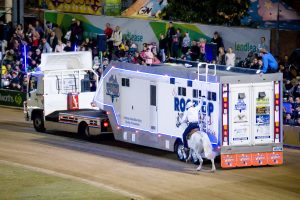 Our first full day at EKKA was complete with the live entertainment in the Main Arena called EkkaNITES
Our first full day at EKKA was complete with the live entertainment in the Main Arena called EkkaNITES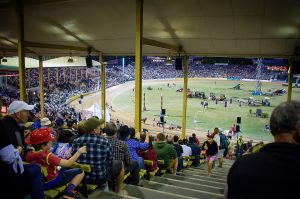 where we joined thousands of others for the night show featuring death defying stunts, high speed action, FMX motorbikes, equestrian skill, dazzling visual effects and a fireworks finale. We didn’t stay long enough to see the finale because by this time it was 4 AM our time and we were all hitting our point of exhaustion.
where we joined thousands of others for the night show featuring death defying stunts, high speed action, FMX motorbikes, equestrian skill, dazzling visual effects and a fireworks finale. We didn’t stay long enough to see the finale because by this time it was 4 AM our time and we were all hitting our point of exhaustion.
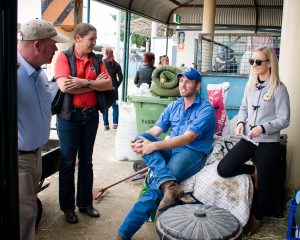
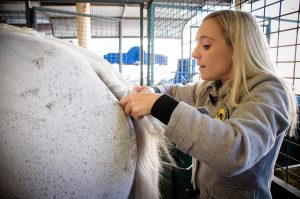
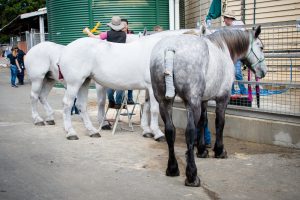
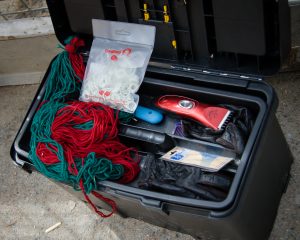
Our third day in Australia and second day at the EKKA brought the led, under saddle and working classes for the Percherons. We started our morning watching as the six gray Percheron mares were being prepped for the Mare or Filly, any age class. We watched as the mare’s manes and tails were plaited. Tools of the braiding trade are much like what we use here, however, I noted we g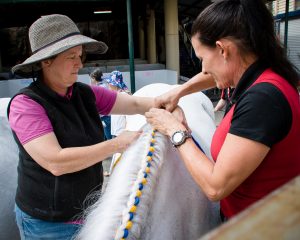 ave up the use of yarn as a mane roll for a polyester, stretchier, material quite a long time ago and all the horse’s tails were undocked. The mares were ready to compete in one of four rings operating in the Main Arena. We were escorted over to a hospitality room where we watched sheep dog trials as we anticipated being ushered out to the arena for the Percheron classes to begin. The attire to enter the arena floor is strict, requiring a hat all ladies and men. Luckily for us there were spare hats on hand and we were all given one to wear so we could get up close to all the action in the arena. Brian was taken to the announcer’s booth where he would be interviewed by the announcer, Angus Lane OAM, during the Percheron classes. Their discussion heard by all show spectators was mainly about the differences and similarities between showing Percherons in Australia versus the United States. At one point Angus put Brian on the spot when he asked him about the weather in Australia compared to home and if Brian had packed his budgie smugglers to go to the beach and Brian replied with “No, I did not bring my bungee jumpers!”. It was then Brian realized Angus was poking good fun at him and his lack of knowledge of Australian terminology, Brian then said, “In the U.S. we don’t wear anything when we go to the beach.” Angus and his quick wit replied with, “Look for the Americans, they will be the ones skinny dipping!”, as the crowd erupted in laughter.
ave up the use of yarn as a mane roll for a polyester, stretchier, material quite a long time ago and all the horse’s tails were undocked. The mares were ready to compete in one of four rings operating in the Main Arena. We were escorted over to a hospitality room where we watched sheep dog trials as we anticipated being ushered out to the arena for the Percheron classes to begin. The attire to enter the arena floor is strict, requiring a hat all ladies and men. Luckily for us there were spare hats on hand and we were all given one to wear so we could get up close to all the action in the arena. Brian was taken to the announcer’s booth where he would be interviewed by the announcer, Angus Lane OAM, during the Percheron classes. Their discussion heard by all show spectators was mainly about the differences and similarities between showing Percherons in Australia versus the United States. At one point Angus put Brian on the spot when he asked him about the weather in Australia compared to home and if Brian had packed his budgie smugglers to go to the beach and Brian replied with “No, I did not bring my bungee jumpers!”. It was then Brian realized Angus was poking good fun at him and his lack of knowledge of Australian terminology, Brian then said, “In the U.S. we don’t wear anything when we go to the beach.” Angus and his quick wit replied with, “Look for the Americans, they will be the ones skinny dipping!”, as the crowd erupted in laughter.
While center ring we were introduced and warmly greeted by Anna Cameron, the President of the Australian Percheron Society (APS), who was center ring presenting awards to the winners of the Percheron classes. Anna graciously gave us each an APS harness brass to bring home. It was nice to finally put a face with a name! If any of you are familiar with Facebook, you will recognize her as the woman behind the Australian Percheron Society page.
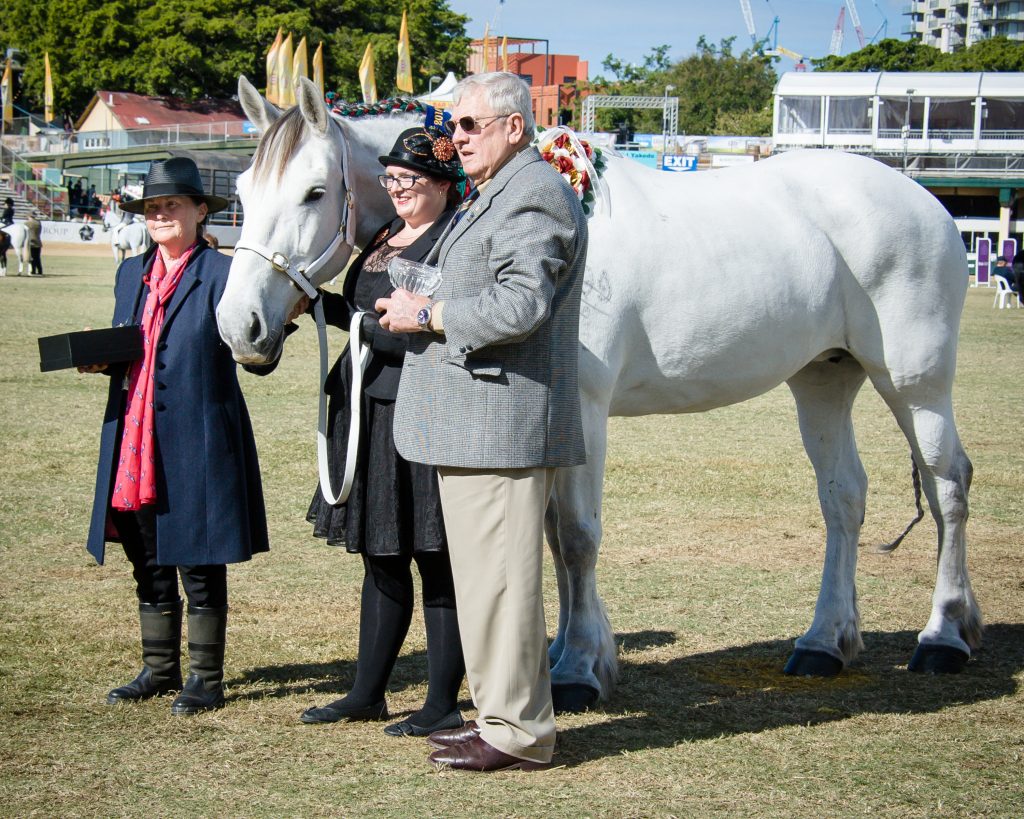 The mares were all led in and walked in a circle around judge Mr. Glen Pate. Glen is a long-term manager and teamster for the Carlton Clydesdale Teams for Carlton and United Breweries. He has traveled all over Australia transporting and driving Carlton Clydesdale Teams. He selects, purchases and trains quality Clydesdales for the Carlton Clydesdales. In the past, he successfully managed and drove the Carlton Clydesdale teams, single harness horses and “in hand stock” in the Royal Show Ring.
The mares were all led in and walked in a circle around judge Mr. Glen Pate. Glen is a long-term manager and teamster for the Carlton Clydesdale Teams for Carlton and United Breweries. He has traveled all over Australia transporting and driving Carlton Clydesdale Teams. He selects, purchases and trains quality Clydesdales for the Carlton Clydesdales. In the past, he successfully managed and drove the Carlton Clydesdale teams, single harness horses and “in hand stock” in the Royal Show Ring.
The mares were brought into a line up and worked individually at the trot for Judge Pate’s inspection. We spectated as show jumping classes were being held behind us and junior girl rider classes were being run in an arena to our right. The mare Aabaron’s Tapestry sired by Trappeur (import Fr/UK) owned and shown by Sian Forrest was named the class winner and due to the lack of entries in both the Gelding and Stallion any age classes the mare was also crowned the Best Percheron Exhibit. Of interest was the led classes which are equivalent to our halter classes here paid premiums to three placings. As an example, the Mare or Filly, any age class paid $50 to first, $25 to second and $15 to third.
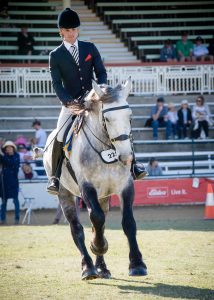 The next Percheron class
The next Percheron class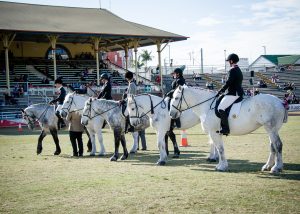 was Percheron Under Saddle where the riders were asked to walk, trot, canter and then to perform individual pattern work for the judge. After the pattern the judge had everyone back individually and then pinned his class of five entries. Cobigan Draught Horses entry of Cobigan Juliette was victorious in the Percheron Under Saddle class. From there it was on to the Percheron part-bred classes which consisted of several entries.
was Percheron Under Saddle where the riders were asked to walk, trot, canter and then to perform individual pattern work for the judge. After the pattern the judge had everyone back individually and then pinned his class of five entries. Cobigan Draught Horses entry of Cobigan Juliette was victorious in the Percheron Under Saddle class. From there it was on to the Percheron part-bred classes which consisted of several entries.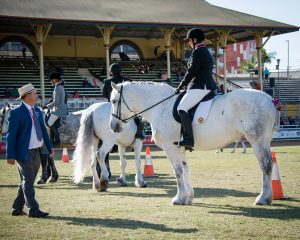
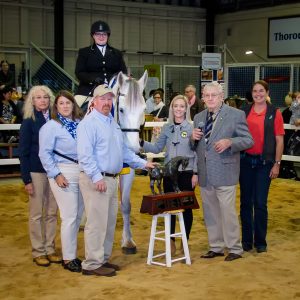 The Percheron classes finished we headed back to the Breed Expo where we along with the PHBAA representatives, Charles, Jamie-Lee and Kirsty presented center ring the perpetual Elvenstone Trophy for Best Percheron Exhibit to Sian and her mare Tapestry. The trophy has been presented annually to the Best Percheron Exhibit of the Royal Brisbane Show since 1988
The Percheron classes finished we headed back to the Breed Expo where we along with the PHBAA representatives, Charles, Jamie-Lee and Kirsty presented center ring the perpetual Elvenstone Trophy for Best Percheron Exhibit to Sian and her mare Tapestry. The trophy has been presented annually to the Best Percheron Exhibit of the Royal Brisbane Show since 1988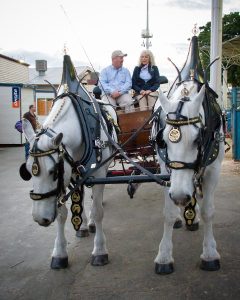 .
.
Sisters, Helen and Christine Perry of Cobigan Draught Horses were then nice enough to finish up our day just before dark to hook their pair of home raised mares, Cobigan Juliette AKA Jules and Cobigan Antoinette AKA Annie for us. Brian and Brenda got to take a drive around the stable yard. They hooked them special for us after a long day of showing and it was surely appreciated!
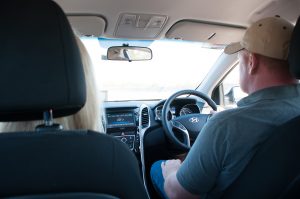 The fourth day started with a little driver license snafu (not mentioning any names, Jamie-Lee) which led to Brian renting a car to tour the countryside with.
The fourth day started with a little driver license snafu (not mentioning any names, Jamie-Lee) which led to Brian renting a car to tour the countryside with.
Well, we all know we had a hard-enough time walking on the opposite side of the sidewalk now Brian had to drive on the opposite side of the road from the opposite side of the car! Jamie-Lee, Brian’s co-pilot, assured him he would be driving on highway and country roads, somehow failed to remember or mention the first obstacle Brian would come to pulling out of the rental car garage would be a rotary! Yes, a rotary and yes, we took the extra insurance this time! In your head try to drive through a rotary from the opposite side of the car on the opposite side of the road. Yeah, you’ve got the picture! If we could only stop laughing long enough for Brian to keep his attention on the road and driving the car! Of course, we had a little fun with Andrea too, texting her a photo of a dented rental car exactly like the one we rented. She didn’t appreciate our humor very much!
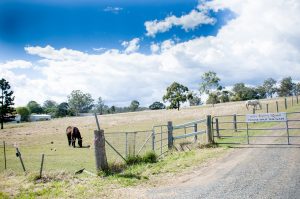 Our first stop was two hours southwest of Brisbane in the Scenic Rim area of southeast
Our first stop was two hours southwest of Brisbane in the Scenic Rim area of southeast 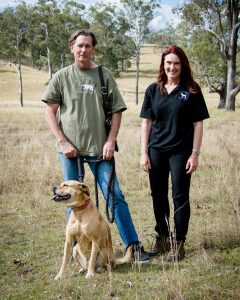 Queensland, High Noon Heavy Horses in Headington Hill, owned and operated by Wayne Barnett and Linda Kratt.
Queensland, High Noon Heavy Horses in Headington Hill, owned and operated by Wayne Barnett and Linda Kratt.
Their focus is on breeding purebred Percherons for working and pleasure. Luckily for us it was a holiday in Queensland therefore the roads were not too crowded. We were amazed to find out the holiday was for people of the Budaberg Region to be able to attend the Royal Queensland Show! At first, we thought Jamie-Lee was just pulling our leg that the Department of Transport office was not open due to a holiday for people to attend the EKKA!
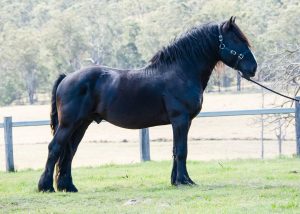 We spent quite a bit of time with Wayne and Linda, who are passionate about their Percherons, at their farm going through their herd of mares, foals, a gelding and their stallion, Cobigan Commander. It was
We spent quite a bit of time with Wayne and Linda, who are passionate about their Percherons, at their farm going through their herd of mares, foals, a gelding and their stallion, Cobigan Commander. It was
evident Commander has some J.P., Jim and Peggy Mills, breeding in his lineage. You could see the influence of “North American” genetics in their herd. While with the foals Brenda took a liking to a filly which Linda promptly named after her. There now stands a filly in Australia named after Mrs. Brenda Grant.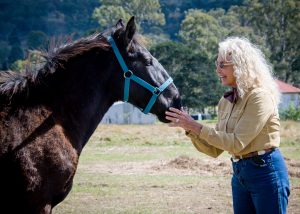
Wayne and Linda have studied under the tutelage of Mr. Ross Carberry who has himself been a draft horse owner since 1978. Ross’ dream was to use draft horses to promote his winery, where he started with Clydesdales. It was 1983 when the Percheron became Ross’ breed of choice after he attended the World Percheron Congress in Calgary. Now Ross provides affordable, excellent quality harness and horse drawn vehicles to the draft horse community of Australia. No doubt the Troyer cart we saw at the EKKA came from Ross. Ross enjoys sharing his knowledge and seeing his fellow harness horse enthusiasts realize their own dreams with draft horses.
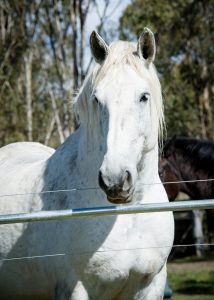 One mare, Olney Park Gloria or “Wayne’s Mare” as Linda referred to her, stood out to us as being a drafty, quality mare which would fit in any broodmare pasture in the U.S. She is a feminine, quality mare with some Supreme Champion Heavy
One mare, Olney Park Gloria or “Wayne’s Mare” as Linda referred to her, stood out to us as being a drafty, quality mare which would fit in any broodmare pasture in the U.S. She is a feminine, quality mare with some Supreme Champion Heavy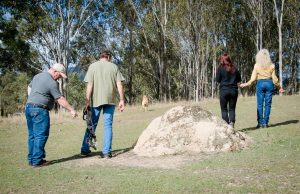 Horse accolades to her credit as well. Our tour of the pasture proved fruitless in the search for some wild kangaroos, however, we did get to see some ant hills like we have never seen before and fireweed which eaten in abundance can be poisonous to horses. We were assured kangaroos are seen frequently in the horse pasture just not when we were visiting. In case we were a bit homesick on our way from the pasture to the barn we had to stop and see Wayne and Linda’s other hobby, a meticulously painted, purple Chevelle drag racing car. Once inside we noticed a copy of the Draft Horse Journal prominently displayed on the kitchen table. Tea and cookies and great conversation all about Percherons ensued.
Horse accolades to her credit as well. Our tour of the pasture proved fruitless in the search for some wild kangaroos, however, we did get to see some ant hills like we have never seen before and fireweed which eaten in abundance can be poisonous to horses. We were assured kangaroos are seen frequently in the horse pasture just not when we were visiting. In case we were a bit homesick on our way from the pasture to the barn we had to stop and see Wayne and Linda’s other hobby, a meticulously painted, purple Chevelle drag racing car. Once inside we noticed a copy of the Draft Horse Journal prominently displayed on the kitchen table. Tea and cookies and great conversation all about Percherons ensued.
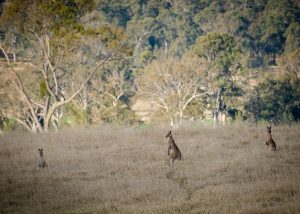 A fantastic visit and daylight wa
A fantastic visit and daylight wa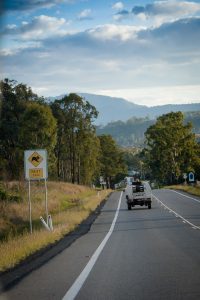 ning we headed off to our next farm visit, south to Deuchar, Queensland with a pit stop on the side of the road to view three kangaroos grazing off in the distance. We arrived to Clint Kenny’s Rivoli Farm just as the sun had set. Clint quickly fed the horses on pasture near the fence line so we could see them by the headlights of our cars. Yet again, we missed the kangaroos who just crossed through the driveway and into the horse pasture moments ahead of our arrival.
ning we headed off to our next farm visit, south to Deuchar, Queensland with a pit stop on the side of the road to view three kangaroos grazing off in the distance. We arrived to Clint Kenny’s Rivoli Farm just as the sun had set. Clint quickly fed the horses on pasture near the fence line so we could see them by the headlights of our cars. Yet again, we missed the kangaroos who just crossed through the driveway and into the horse pasture moments ahead of our arrival.
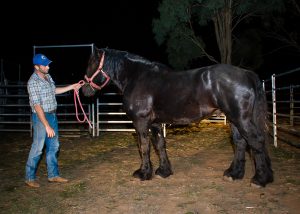 Clint brought us up the lane to where he had his stallion, Ballara Le Roi, waiting for us. Le Roi impressed us with his quiet temperament and his docility.
Clint brought us up the lane to where he had his stallion, Ballara Le Roi, waiting for us. Le Roi impressed us with his quiet temperament and his docility. 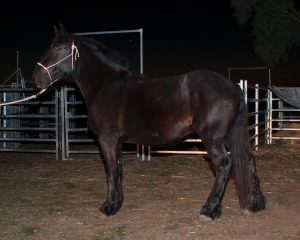 He then brought out his mare, Cobigan Pandora AKA Dora, who was likely the tallest Percheron we saw while in Australia and was most similar in type to what you would find in North American Percherons.
He then brought out his mare, Cobigan Pandora AKA Dora, who was likely the tallest Percheron we saw while in Australia and was most similar in type to what you would find in North American Percherons.
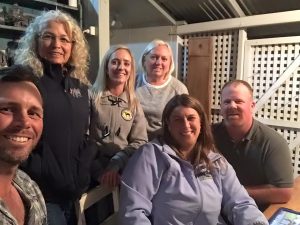 Clint makes his living designing and creating gardens where his family farm is one of his latest phenomenal projects. We received a tour of their garden in progress and grand home which was once a Brisbane doctor’s house and hospital ward relocated to the country. The ceilings are at least 10 feet high! Rosi, Clint’s mother, made us a fabulous meal of lamb chops and from scratch chicken noodle soup! Brenda would have taken some soup home with her if she could! Amazingly, we made it back to the rental car garage dent free, after an incredible day touring the countryside, which ranged from mountains, rainforest to open plains!
Clint makes his living designing and creating gardens where his family farm is one of his latest phenomenal projects. We received a tour of their garden in progress and grand home which was once a Brisbane doctor’s house and hospital ward relocated to the country. The ceilings are at least 10 feet high! Rosi, Clint’s mother, made us a fabulous meal of lamb chops and from scratch chicken noodle soup! Brenda would have taken some soup home with her if she could! Amazingly, we made it back to the rental car garage dent free, after an incredible day touring the countryside, which ranged from mountains, rainforest to open plains!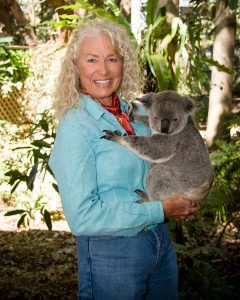
Who would travel all the way to Australia and not cuddle a Koala, even if it were only for a minute? Brenda almost refused to leave the Koala sanctuary on our final day. In the evening, we met for dinner with Karen Foran of Elwyn Park’s Kamilaroi Percherons, PHBAA member, Kelsey Bell, Kamilaroi Intern, Carolien Been and APS member, Grant Hunter for some delightful conversation, sharing photos and stories about Percherons and their use at Kamilaroi Percherons. Kamilaroi has been in the Percheron business since 1975. We found it brilliant to hear at least one of the mounted horses we had seen on our first visit to the EKKA came from Kamilaroi.
I believe we came away from our mission feeling well received and excited for the future relationship between the many Perheron breeders in Australia and the PHAoA. The main takeaway from the mission to Australia was the obvious want and need for genetics from the breeders of Percherons in the United States.
The question now is, “Where do we go from here?”. Importing horses into Australia is not an easy or inexpensive undertaking, quite understandably! Australia has a unique environment which Australia’s Department of Agriculture and Water Resources would like to protect from unwanted pests and diseases. The importation of both live animals and frozen semen is subject to certain biosecurity import conditions overseen by the Biosecurity Import Conditions System (BICON). The most economical option for Australian Percheron breeders to import genetics is frozen semen. The doors are open, we now need to step through them and make this a successful partnership amongst Percheron breeders from Australia and the United States.
